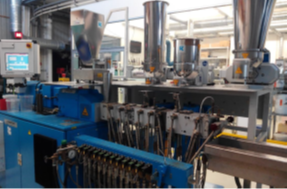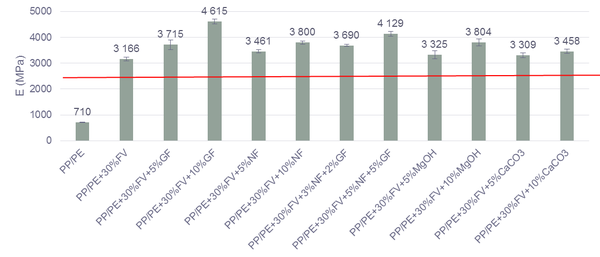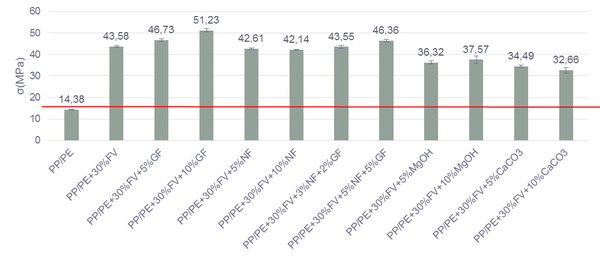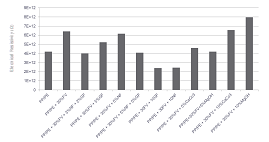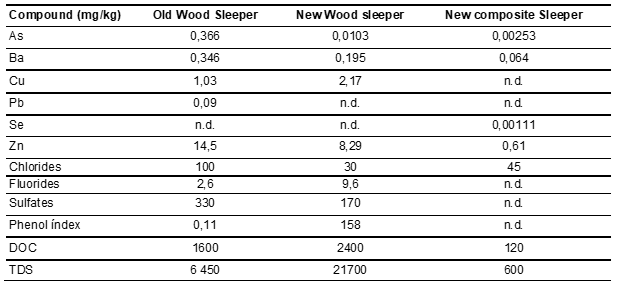1 Introduction
In the last six and a half decades plastic materials had an explosive growth in terms of production and consumption, becoming the most ubiquitous materials in this century. This development was due to plastics exceptional properties, eg: versatility, processability, cost, low specific weight, among others. In fact, the properties of these materials make them particularly suitable for use in many applications such as food packaging, which together with high portability, low weight, resistance to environmental degradation and the perception of reduced intrinsic value, make them dominant materials in municipal solid waste (MSW) and in the environment. It is estimated that in 2013, worldwide, 78 million tons of packaging plastic materials were used, of which, in the End of Life (EoL), 11 million (14%) were used in waste-to-energy and about 8 million were recycled (20% of these in products with the same level of specifications - closed loop recycling). The remainder was either landfilled, thus lost to the recycling process (since all recycling facilities have incomes of less than 100%, up to 50% in the case of heavily contaminated post-consumer plastics) or was abandoned irresponsibly in the environment. However, in the European Union (EU28), the proportion of recycling and, above all, energy recovery, are higher than the world average, at 39.4% and 29.7%, respectively and landfilling is consequently lower. In Portugal, the strategic plan for municipal waste, PERSU 2020 set targets that are in line with the various European Directives, transposed into national legislation. This document assumes extremely ambitious targets for 2020, at the level of collection and referral for recycling of different materials and also at the packaging level [1].
The history of the railroad, in Portugal and in the world, is inseparable from the wooden sleepers. Over the course of more than 150 years of history since the birth of railways in Portugal, the installation of wooden sleepers on the national rail network have continued, currently mostly on track sections that can’t be replaced by reinforced concrete crosspiece. In Portugal, the national rail network consists of about 2480 km of railroads, being roughly 2145 km with concrete sleepers and 254 km using wood sleepers. The restriction on the marketing of biocidal products such as the creosote treatment performed on wood sleepers, introduced by Directive 98/8/EC, has triggered the replacement of several products traditionally produced in wood such as electricity poles and wooden railway sleepers. Recently, the Execution Decision 2017/2334 of the Commission from 14 December 2017 extended the permission to use creosote in biocidal products up to 31st October 2020, accelerating the urgency to substitute the wood sleepers by a techno-environmental viable alternative [2,3]. In this context, the process of replacing wooden railway sleepers is at present a legal imposition which entails high costs and requires alternative solutions such as sleepers produced in other materials and with the required performance for the application. The waste plastic presents a great potential as raw material for plastic lumber, and may replace wood in the application, originating sleepers with the required properties, if combined with key materials and correctly conceived from the technical-scientific point of view. Sleepers made from mixed plastics waste have a list of advantages over other materials, such as: low density, with great advantage in the application in bridges and overpasses; durability, without the need for harmful chemical treatments; impermeability to moisture and resistance to microorganisms; its use avoids felling of large numbers of trees for the production of sleepers; and finally, but of great importance, it significantly reduces the amount of mixed plastics waste deposited in landfill. The project aims at demonstrating the potential of mixed plastics waste as raw material for the development of eco-sustainable railway sleepers, through materials and process engineering. The sleepers produced will be tested in a real working environment. It will contribute strongly to the recycling of mixed plastics, with the incorporation of technology, transforming them into added value products with market potential. In the framework of the project one of the first studies was the environmental assessment of the new plastic sleeper and its comparison with traditional wood sleepers.
2 Methods
The preparation and characterization of new composite materials based on mixed plastics waste/glass fibres were obtained by extrusion compounding. Prototype eco-friendly railway plastic-sleepers were produced by intrusion processing and will be further characterized and tested in simulated operating conditions on a test track. The initial ecotoxicological evaluation carried out in wood and plastic sleepers was done considering the leaching of potential harmful products to the environment, namely metals (As, Ba, Cu, Pb and Zn), chlorides, fluorides, sulfates, dissolved organic carbon (DOC), phenol index and total dissolves solids (TDS). The leaching study was performed according to EN 12457-4. The samples tested consisted in: an old sleeper removed after 20 years of using (A) and a new wood sleeper (B) one new plastic sleeper (C).
3 Results and Discussion
All the properties explored and established in this work were adjusted to the necessary performance to meet the requirements of ISO/DIS 12856, the International Standard for Plastic Railway Sleepers.
The plastic lumber produced directly from mixed plastics waste materials presents low mechanical properties; within the project the composites produced with mixed plastics waste presented increased mechanical properties reaching a tensile modulus of 4,6 GPa (Figure 2).
Figure 3 shows the flexural strength of the compounds developed in this work, and it is in accordance with the results exhibited in Figure 2. Both the flexural modulus and the flexural strength of the composites are above the minimum requirements defined in ISO/DIS 12856, which points out to an enhanced mechanical resistance of the composites. Additionally, the incorporation of graphite seems to have a greater impact in the overall mechanical properties of the materials.
Other relevant properties such as electrical conductivity, thermal and fire resistance and dimensional stability, were studied. Regarding the electrical characterization of the samples, a picoamperemeter was used, following the ISO 12856-1, to obtain the electrical resistivity of each sample. Figure 4 presents the electrical resistivity of the compounds, showing that the samples with 10% of carbon black and graphite exhibit, as expected, the lower values of resistivity.
The leaching results showed that the content of some compounds were higher for old wood sleeper (such as As, Ba, Pb, Zn, chlorides and sulfates) than for the new ones sleepers indicating contamination from trains crossing the railroads. On the other hand TDS, DOC, fluorides and phenol index is higher in new wood sleeper. This, especially the Phenol index, indicated that during the use of wood sleepers high amounts of phenol compounds are released to the environment, causing an environmental burden to soils and water courses. Regarding the new composite sleepers, in terms of leaching components (with exception of Se and chlorides) the environmental burden is significantly smaller than the wood sleeper indicating that this new ecoproduct has a lower environmental impact than the conventional wood sleepers.
4 Conclusions
Based on the results obtained according to the ISO/DIS 12856 (International Standard for Plastic Railway Sleepers), namely the mechanical and electrical properties, we can conclude that the composite material based on mixed plastics waste with 30% of Glass Fibres (FV) and 10% of Graphite (GF) is the most suitable as a raw material for the development of eco-sustainable railway sleepers.
The Prototype eco-friendly railway plastic-sleepers were produced by intrusion processing and will be tested in simulated operating conditions on a test track in the next months.
Considering the environmental issues and the tests performed so far, it is possible to conclude that new composite sleepers have lower impact in the environment than the conventional wood sleepers. This impact will be further evaluated through Life Cycle Analysis (LCA).
5 Methods
This development work has been co-financed by: COMPETE 2020, Portugal 2020 and the European Union through the European Regional Development Fund (ERDF) under project POCI-01-0247-FEDER-017972, ECO SUSTAINABLE RAIL;
This communication work has been co-financed by Fundo Europeu de Desenvolvimento Regional (FEDER) through the Program Interreg V-A España-Portugal (POCTEP) 2014-2020, VALORNATURE.
References
[1] Portaria n.º 187-A/2014, publicada em DR (I Série) n.º 179, de 17 de setembro de 2014, o Plano Estratégico dos Resíduos Urbanos (PERSU 2020). Ministério do Ambiente, Ordenamento do Território e Energia. 2014.
[2] Diretiva 98/8/CE do Parlamento Europeu e do Conselho de 16 de fevereiro de 1998 relativa à colocação de produtos biocidas no mercado. [3] Decisão de execução (UE) 2017/2334 DA COMISSÃO de 14 de dezembro de 2017 que prorroga a validade da aprovação do creosote para utilização em produtos biocidas do tipo 8.
Document information
Published on 03/07/22
Accepted on 03/07/22
Submitted on 03/07/22
Volume 04 - Comunicaciones Matcomp19 (2020), Issue Núm. 3 - Materiales bioinsipirados, 2022
DOI: 10.23967/r.matcomp.2022.07.015
Licence: Other
Share this document
claim authorship
Are you one of the authors of this document?
